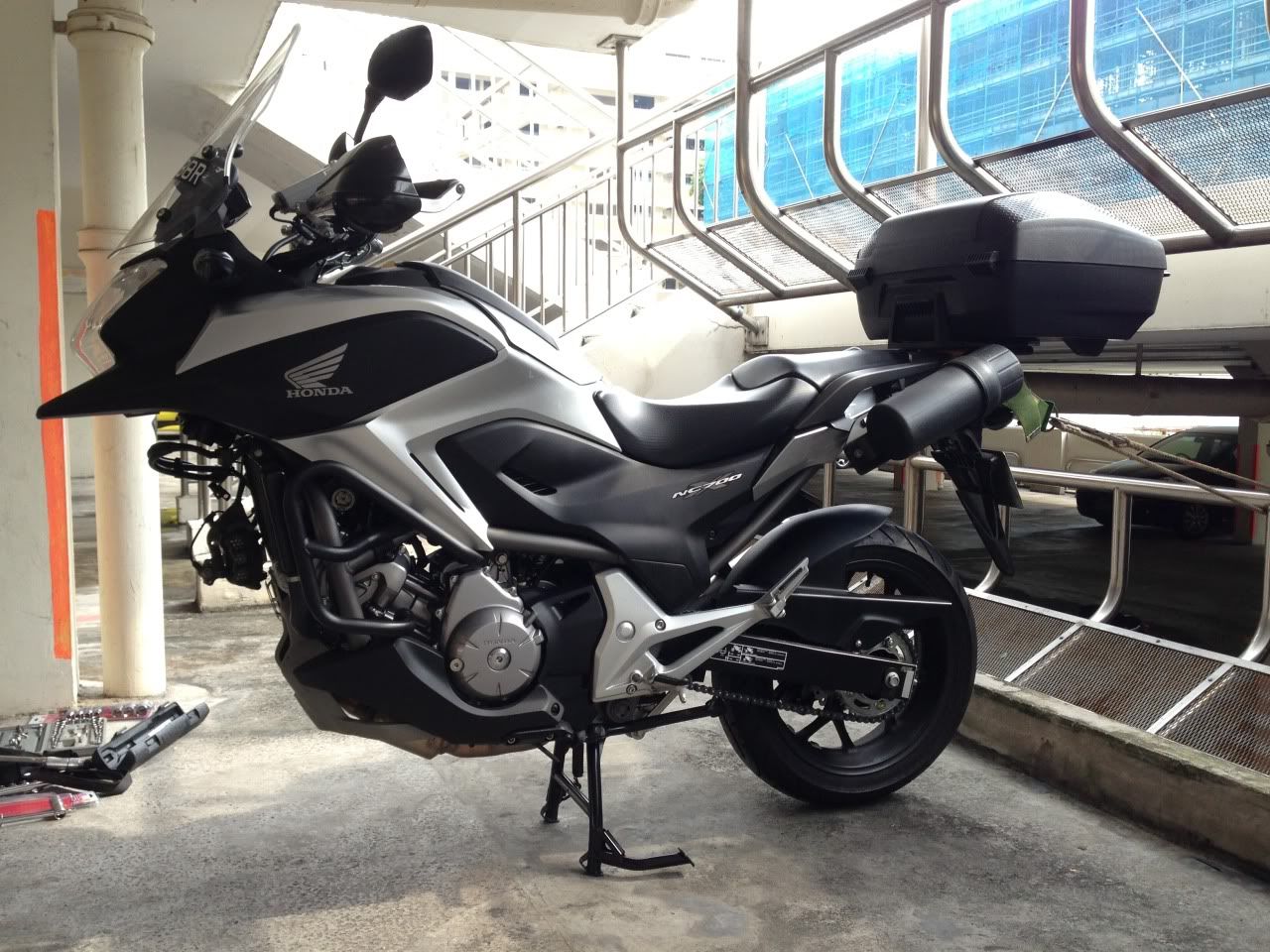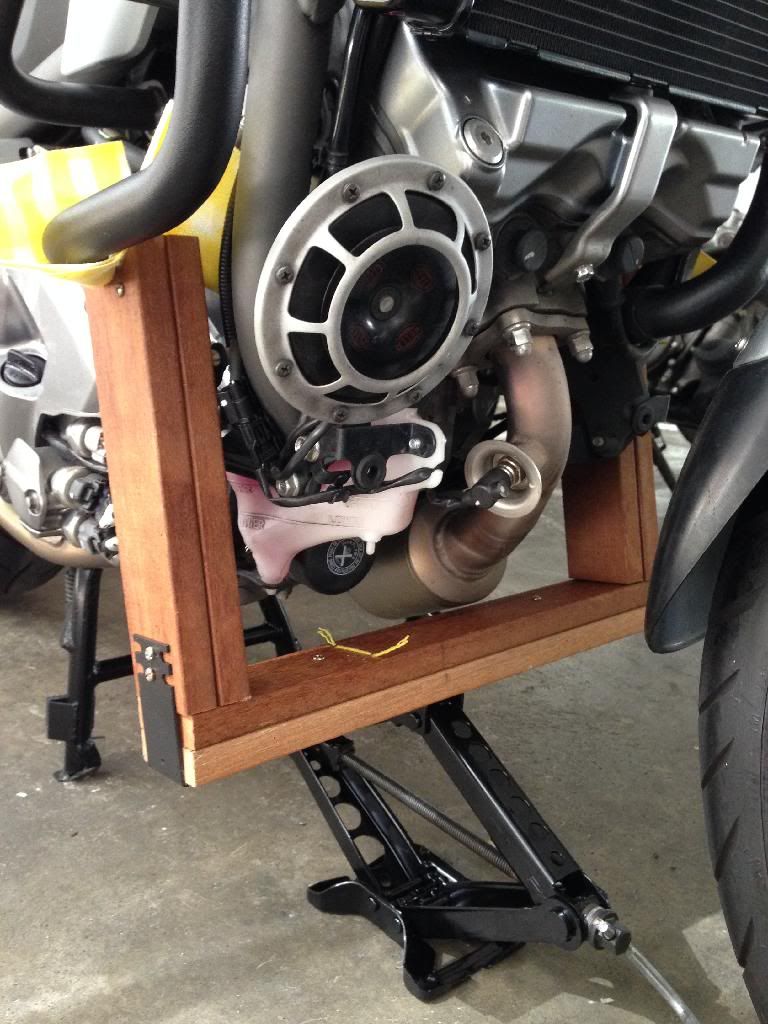Thanks for all the inputs. Where is a good place to put the jack to lift the front? I have the oem centrestand.
Unfortunately I found no particularly good place for a jack under the NC other than using an assortment of odd lumber scraps under the oil pan to mate it up with the jack cradle.
Greg




